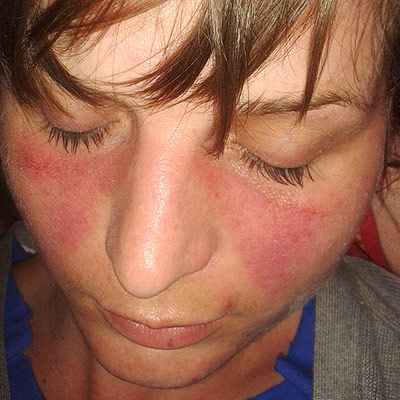In the USA, prevalence of systemic LE is 14.6-130/100 000; epidemiological studies from other countries almost overlap with such values. CLE includes a variety of specific skin lesions that are subdivided, based on clinical morphology, average duration of skin lesions and routine histopathological examination, into three categories: chronic CLE where discoid lesions are the most common skin manifestations (DLE) subacute CLE (SCLE) and acute CLE (ACLE). Etiology of LE remains to be clarified. Interactions between genetic, infective and hormonal factors trigger alterations of immunoregulation that mediate the pathogenesis of this disease. Effective sun screening and sun protection are considered the first rule in the management of CLE. Antimalarials are crucial in the treatment of CLE and are the first-line systemic agents. Retinoids, known as the second-line drugs for systemic therapy, are sometimes used to treat chronic forms of CLE. Systemic immunosuppressive agents are required to manage the underlying systemic LE disease activity in cases of ACLE. Oral prednisone or parenteral ``pulsed'' methylprednisolone are useful in case of exacerbations of disease activity. Thalidomide provides one of the most useful therapeutic alternatives for chronic refractory DLE even if, for the risks of teratogeny and polyneuropathy, its distribution is limited to few countries. Topical treatment with local corticosteroids remains the mainstay of CLE treatment, especially for DLE and SCLE. Finally, patient education regarding the disease is also important in the management of CLE, because it helps to relieve undue anxiety and to recruit the patient as an active participant in the treatment regimen.
Expert reviewer(s)
- Dr Marzia CAPRONI
- Dr Carla CARDINALI
- Pr Paolo FABBRI
- Dr Barbara GIOMI
